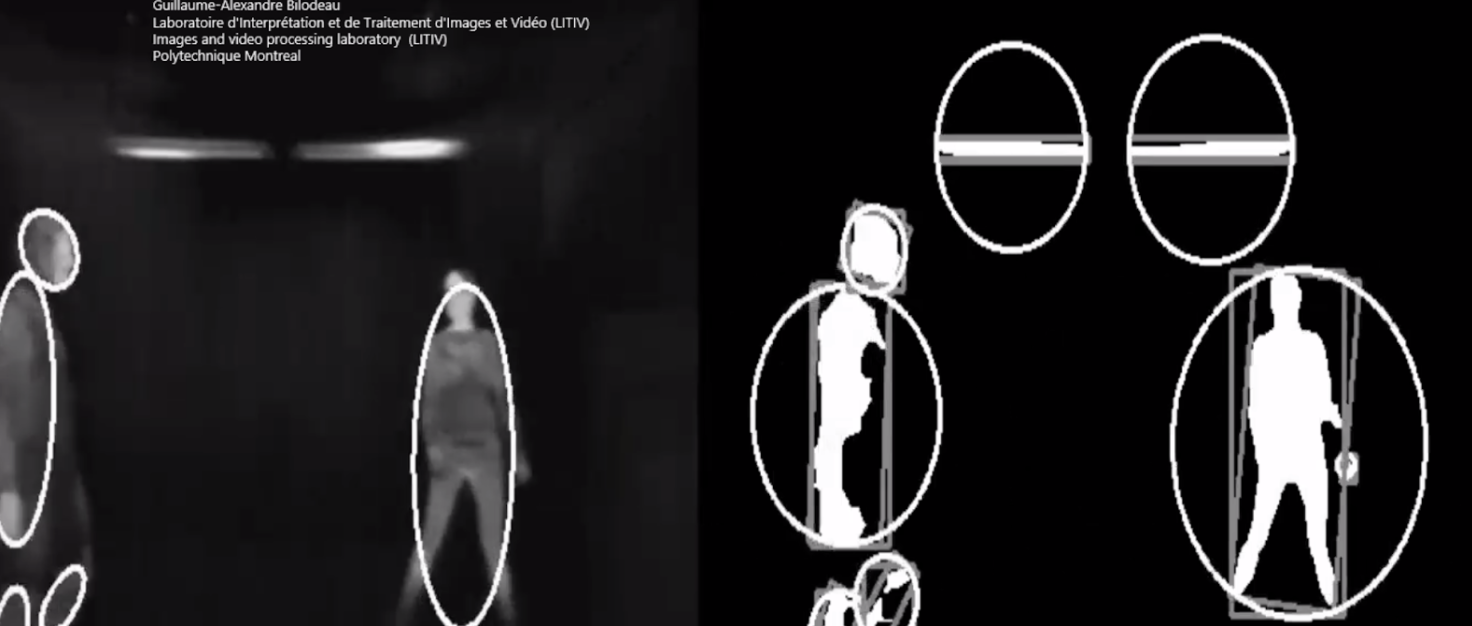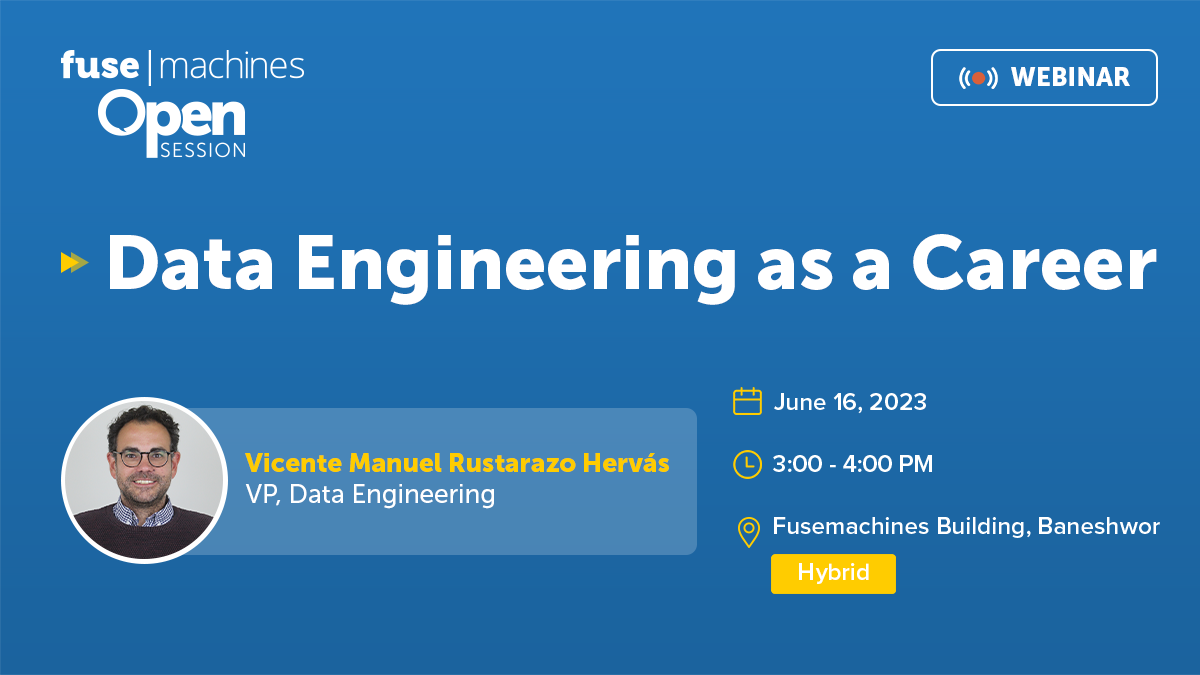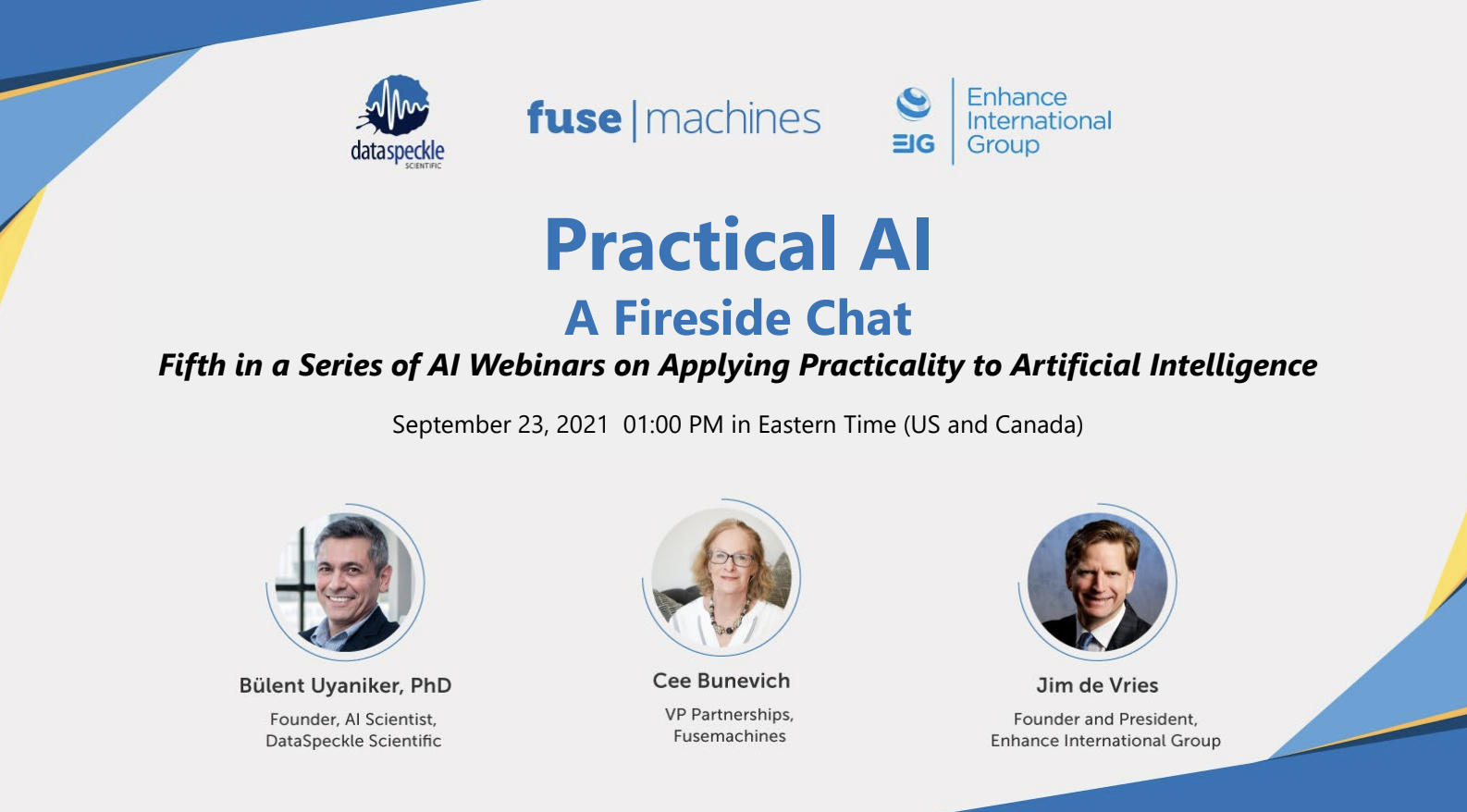Video to Insight Part I “Visual and Audio Worlds” Webinar Takeaways

This webinar was the 3rd in a series of webinars on practical AI for business with Cee (Carol) Bunevich VP of partnerships at Fusemachines, partner Jim de Vries, founder of Enhance International Group (EIG), and Bülent Uyaniker, Fusemachines PhD consultant and founder of DataSpeckle.
EIG stands to challenge prevailing management practices by collaborating with companies on turnaround management, corporate restructuring, productivity, and performance improvement for companies and stakeholders.
The interactive webinar covered deriving insights from video using artificial intelligence and addressed common applications, challenges, and solutions.
Here are our takeaways.
Video Infrared Pattern Recognition Use Cases
Infrared cameras detect body and vehicle temperatures and video infrared pattern recognition is used in hospitals, offices, gyms, shopping centers and street traffic. The technology monitors safety by identifying injuries, workplaces, wards, and private premises. Similarly, it conducts security surveillance and identifies violence, burglary, theft, and vandalism. It also plays a large role in agriculture and landscaping by monitoring soil and crops using mobile cameras in vehicles, drones, and people (Go-Pro). Cameras can also go on ships and airplanes and can monitor lines allowing people to determine how crowded something was over time.
Video infrared example
The above is an example of video infrared for pedestrian detection. The algorithm is programmed to detect and monitor people. The version on the left is sensitive to heat, which protects individuals’ privacy and is a cost effective solution to video surveillance.
Common Challenges for Video Capture
There are various challenges for video capture, the main one being privacy. On top of this, cameras have limited ability in the night time, dark places, and underwater and are unable to manage these environmental conditions. Additionally, one needs AI expertise, infrastructure, cheap cameras, and an understanding of wavelengths for video capture.
Solution Approaches to Privacy Constraints
- Utilized stationary/fixed or mobile (Go-Pro) cameras
- Leverage receivers and cell towers in telecommunication
- Tracking of people not people themselves
- Identify the type of people to monitor without violating privacy
- Don’t collect personal data (count people in/out of stores, airplanes, etc.), identify male or female, usage patterns
- Different regulations in the USA, Europe, Canada and China
- Video infrared augmented with AI/ML is good solution — cheap and solves privacy question
Key learnings
- Choose simplest solution possible
- Video infrared AI/ML is a viable alternative
- Video AI/ML can provide significant value while addressing privacy concerns
- Machine provides the underlying insight
To watch the webinar, click here.



